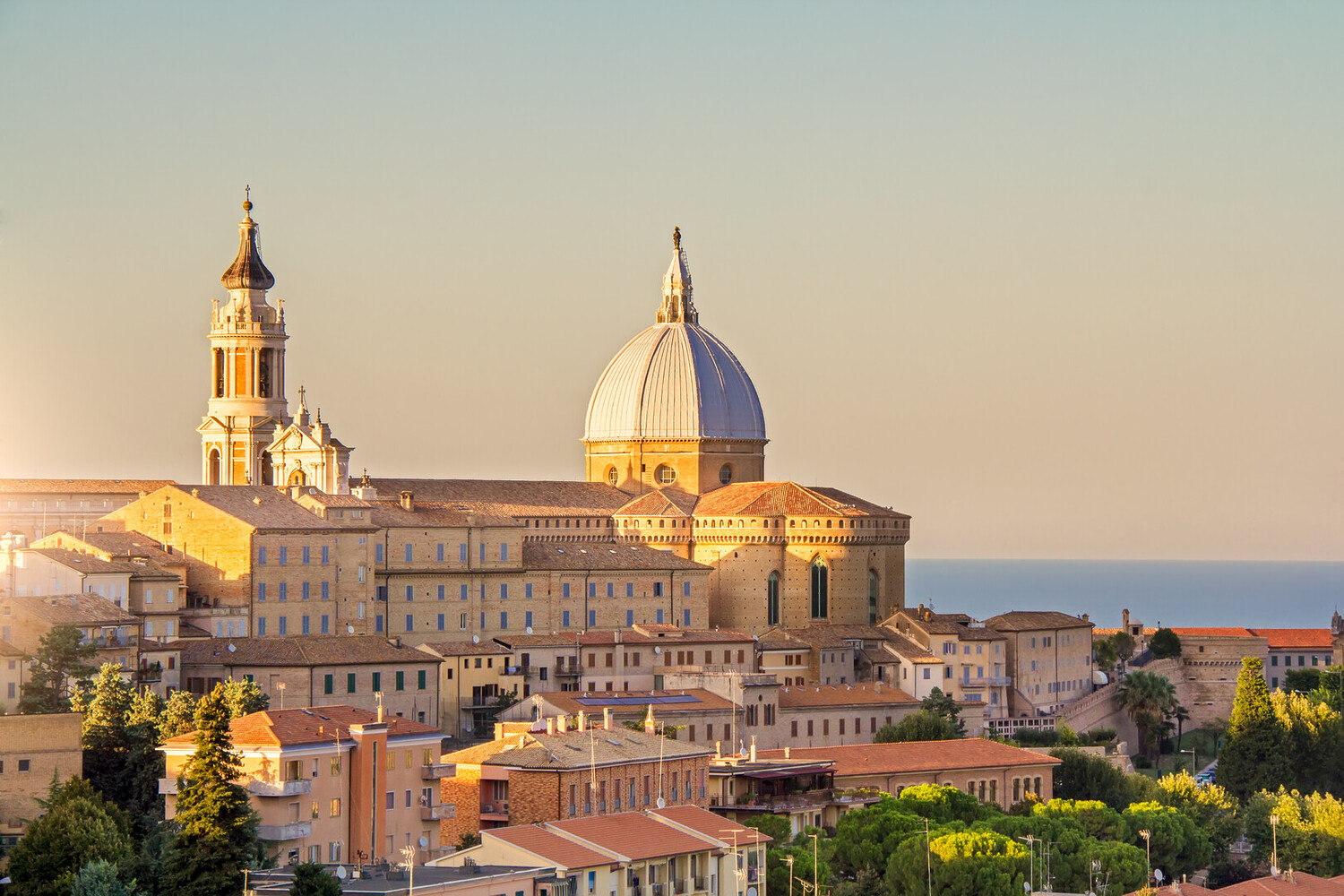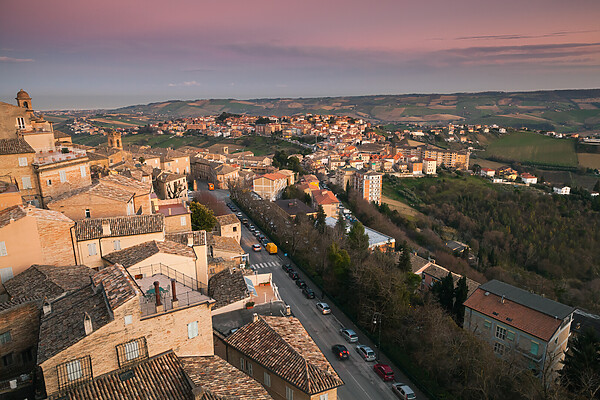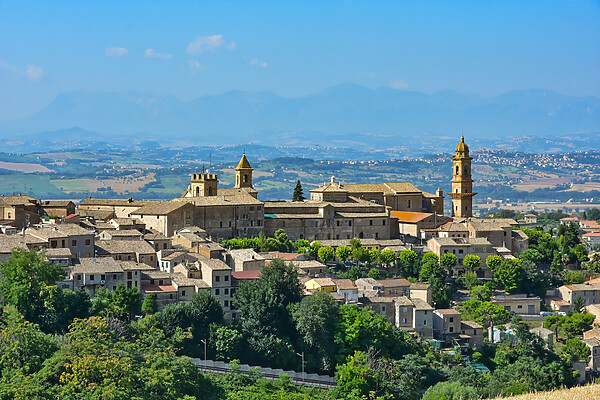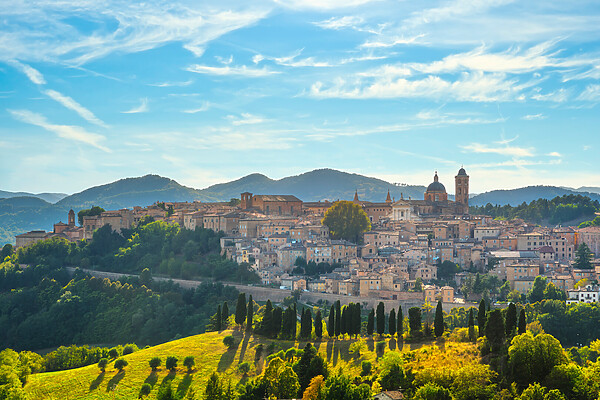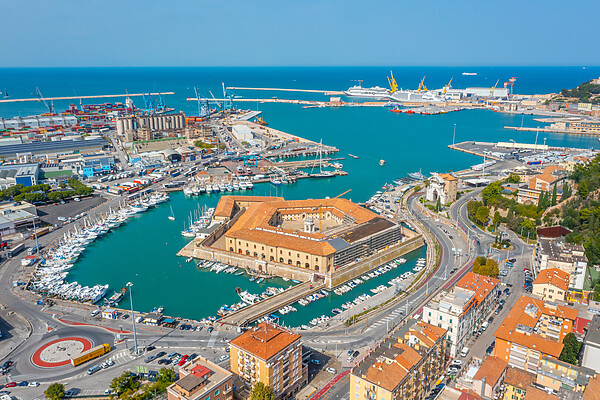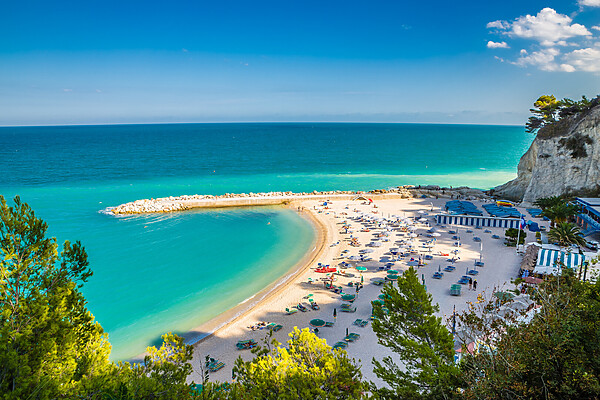High above the Adriatic, Loreto delivers drama, devotion, and damn good views. Known for housing the legendary Holy House of Mary, this hilltop town pulls in pilgrims and architecture fans alike. But it’s not all incense and marble, visit Loreto and you’re also in striking distance of some of the best Marche wineries, where a glass of Verdicchio is the unofficial post-basilica ritual. Holy site or not, it’s worth the detour.
Table of Contents
Visit Loreto: Best things to see
Visit the Basilica della Santa Casa
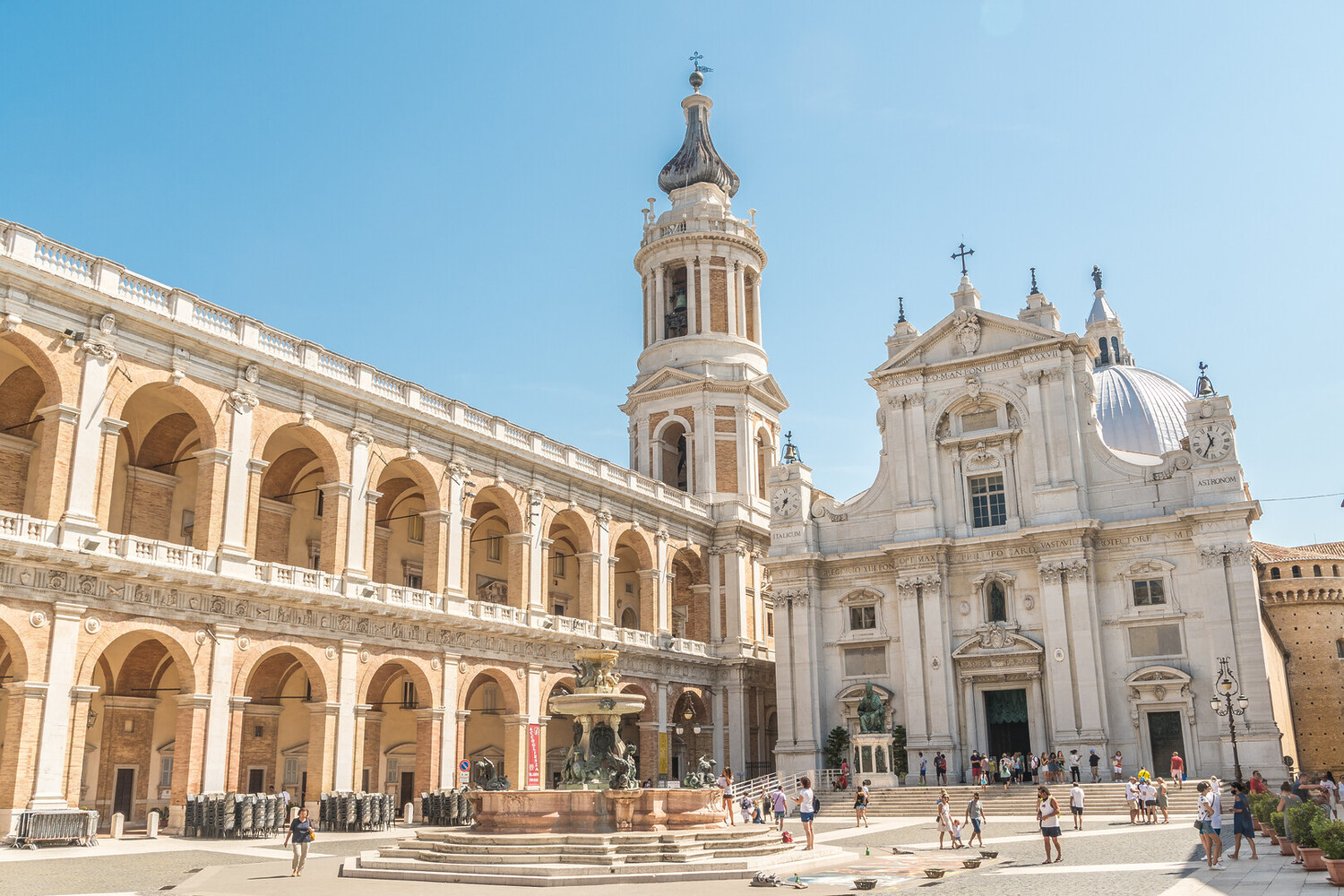
Inside Loreto’s Basilica della Santa Casa, you’ll find something far more powerful than frescoes or gold trim, a small stone house said to have once stood in Nazareth. Legend says it was carried here by angels in 1294, and today it’s tucked inside a stunning marble shrine designed by Renaissance heavyweights like Bramante and Maderno. People don’t just visit for the story, they come for the atmosphere, the craftsmanship, and the rare feeling that something this ancient is still right in front of you.
Explore the holy house of Loreto
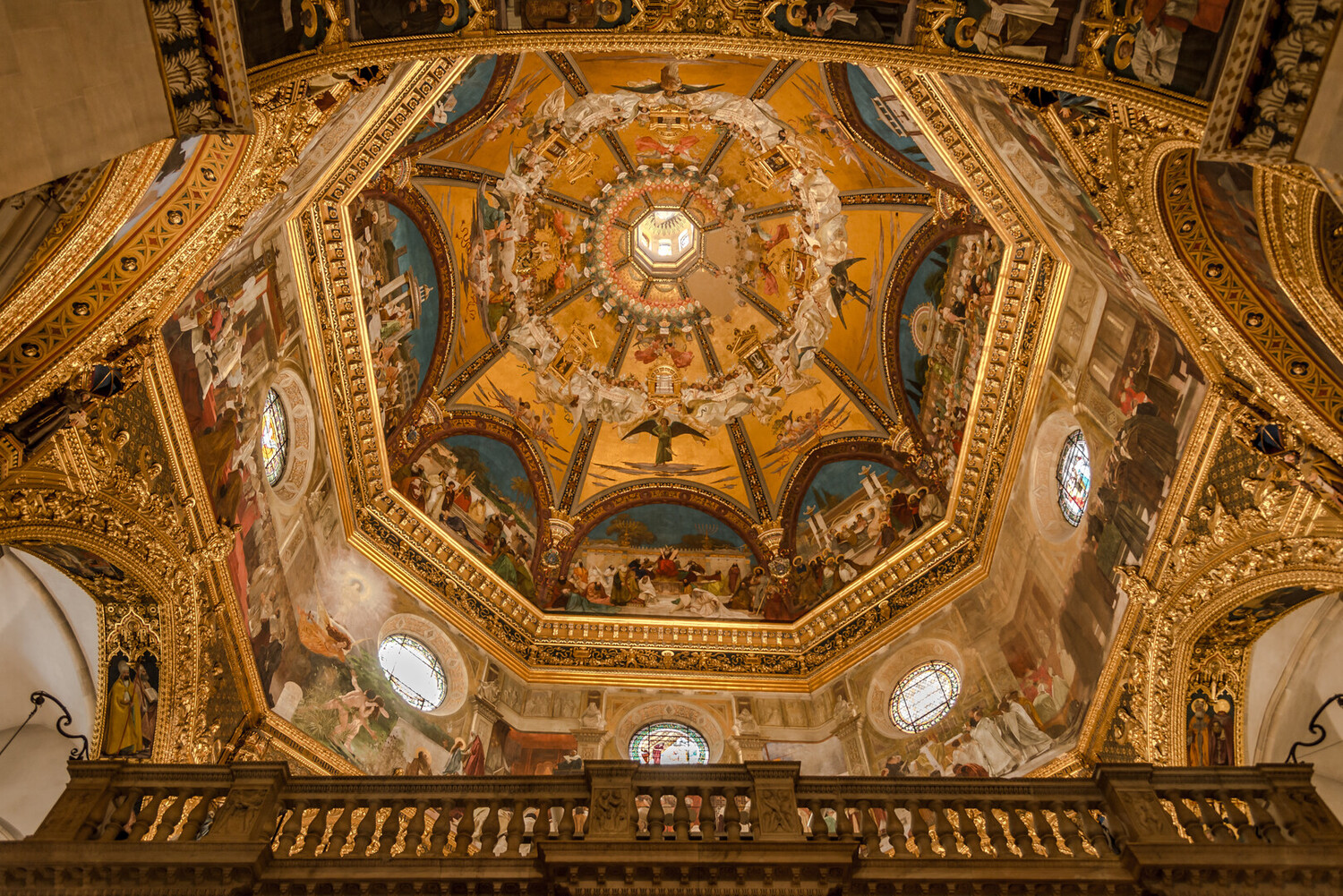
The Santa Casa, or Holy House of Loreto, has drawn pilgrims for centuries. According to tradition, this is the very house where Mary lived in Nazareth, moved to Loreto by angels to protect it during the Crusades. Inside the basilica, you can walk around its original stone walls, now encased in carved marble panels sculpted by some of Italy’s greatest artists. It’s one of those rare places where art, legend, and faith collide, and where even the non-religious stop and take notice.
Wander through Piazza della Madonna

Piazza della Madonna stuns at first sight. Framed by the towering Basilica, the Apostolic Palace, and graceful arcades, it’s where Loreto puts all its beauty on display. At its center, Maderno’s baroque fountain sparkles in the sun, a striking contrast to the centuries-old stone. Locals and visitors flow through the square all day, some grabbing coffee, others snapping photos, many simply pausing to take it all in.
Stand before the Fountain by Maderno
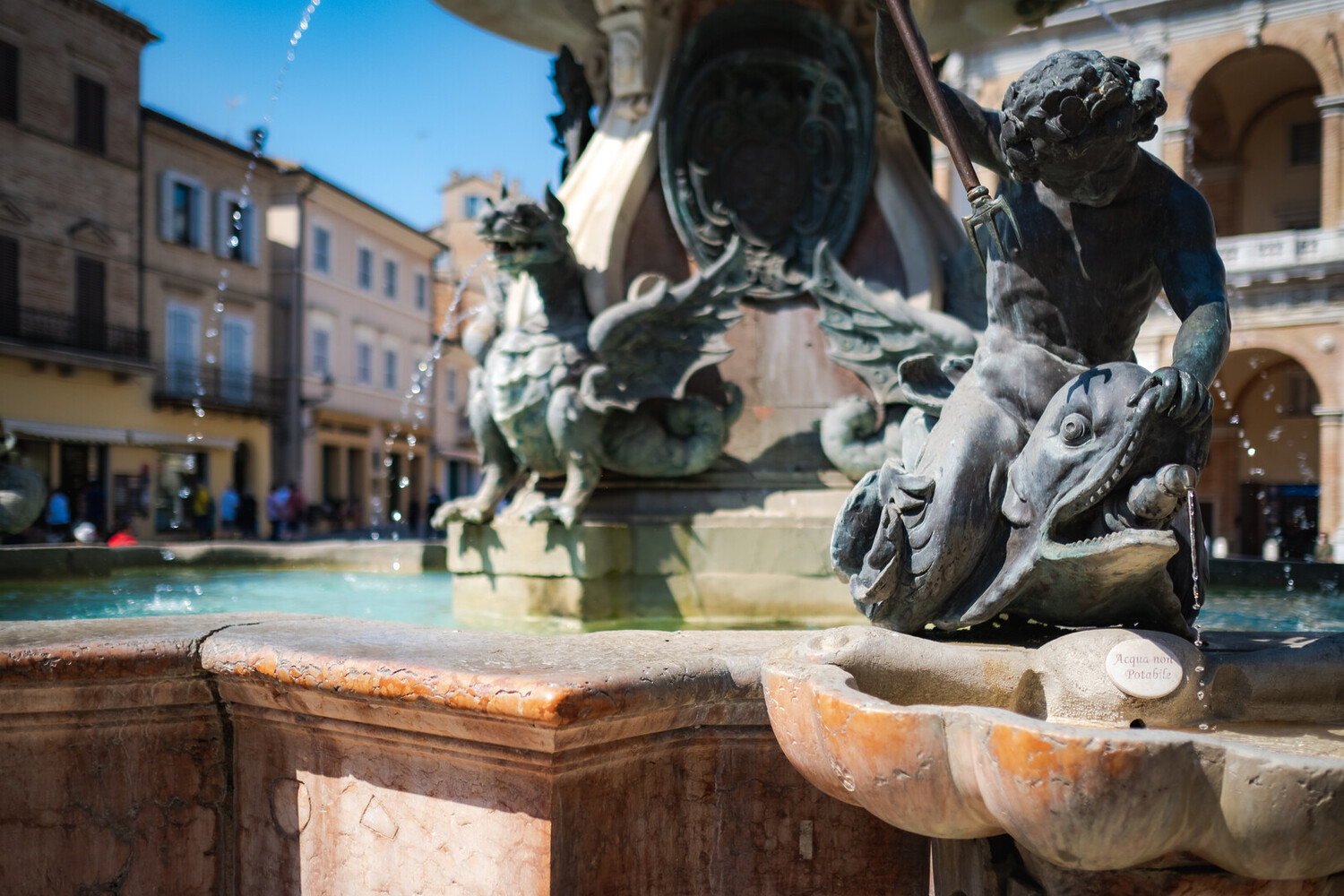
Right in the heart of Piazza della Madonna, the fountain by Carlo Maderno and Giovanni Fontana does more than just sparkle in the sun. It’s a baroque masterpiece, covered in cherubs, sea creatures, and symbols that tell the story of Loreto’s grand ambitions after the Renaissance. Built to impress and refresh, it’s a detail that brings the whole square to life.
Admire the Madonna of Loreto
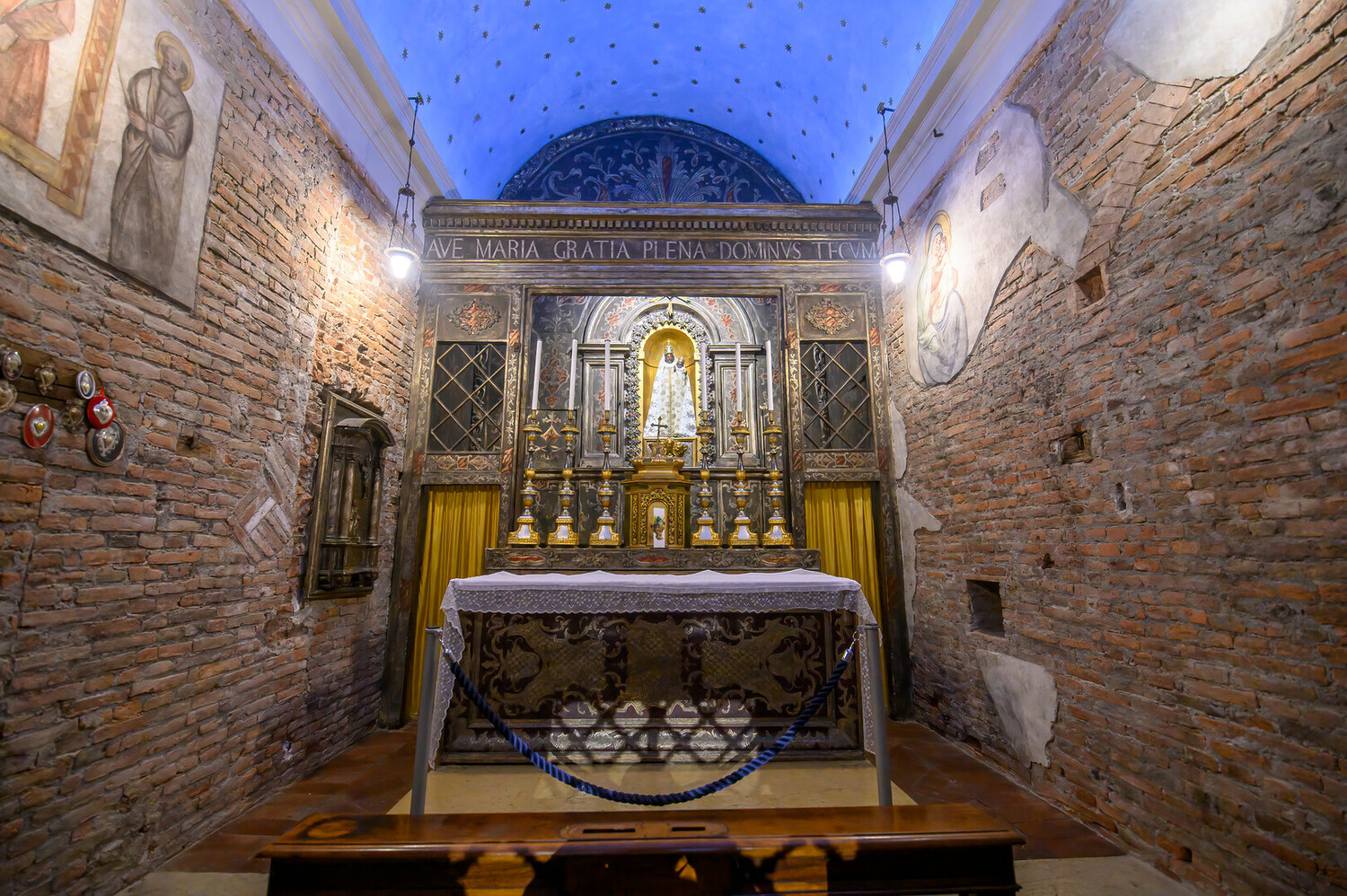
The Madonna di Loreto isn’t just a sacred statue, she’s a symbol of protection, miracles, and resilience. As the patron saint of aviators, she’s watched over soldiers, travelers, and pilgrims for centuries. Housed inside the Holy House, this revered image, also known as Our Lady of Loreto, has become a powerful emblem of faith through war, peace, and everything in between.
See the bell tower
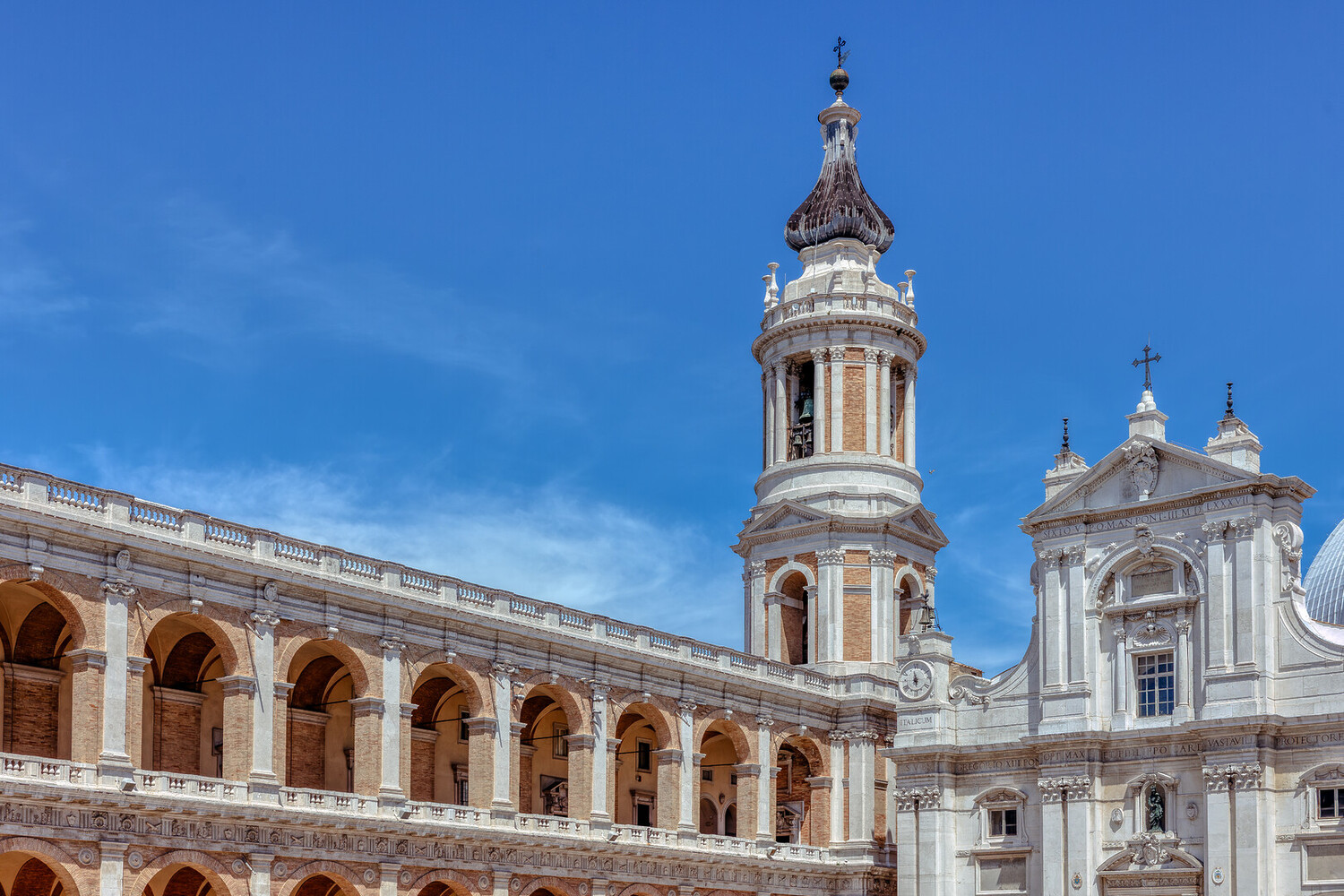
The bell tower beside the Basilica della Santa Casa doesn’t just stand tall, it sings. Designed in part by Luigi Vanvitelli, this towering structure brings a sense of rhythm to Loreto with its resonant chimes echoing across Piazza della Madonna. Climb it (if you’re up for it) for panoramic views stretching from the Adriatic coast to the Apennine, it’s one of those moments that stays with you.
Visit Loreto: Best things to do around
Visit the medieval charm of Recanati
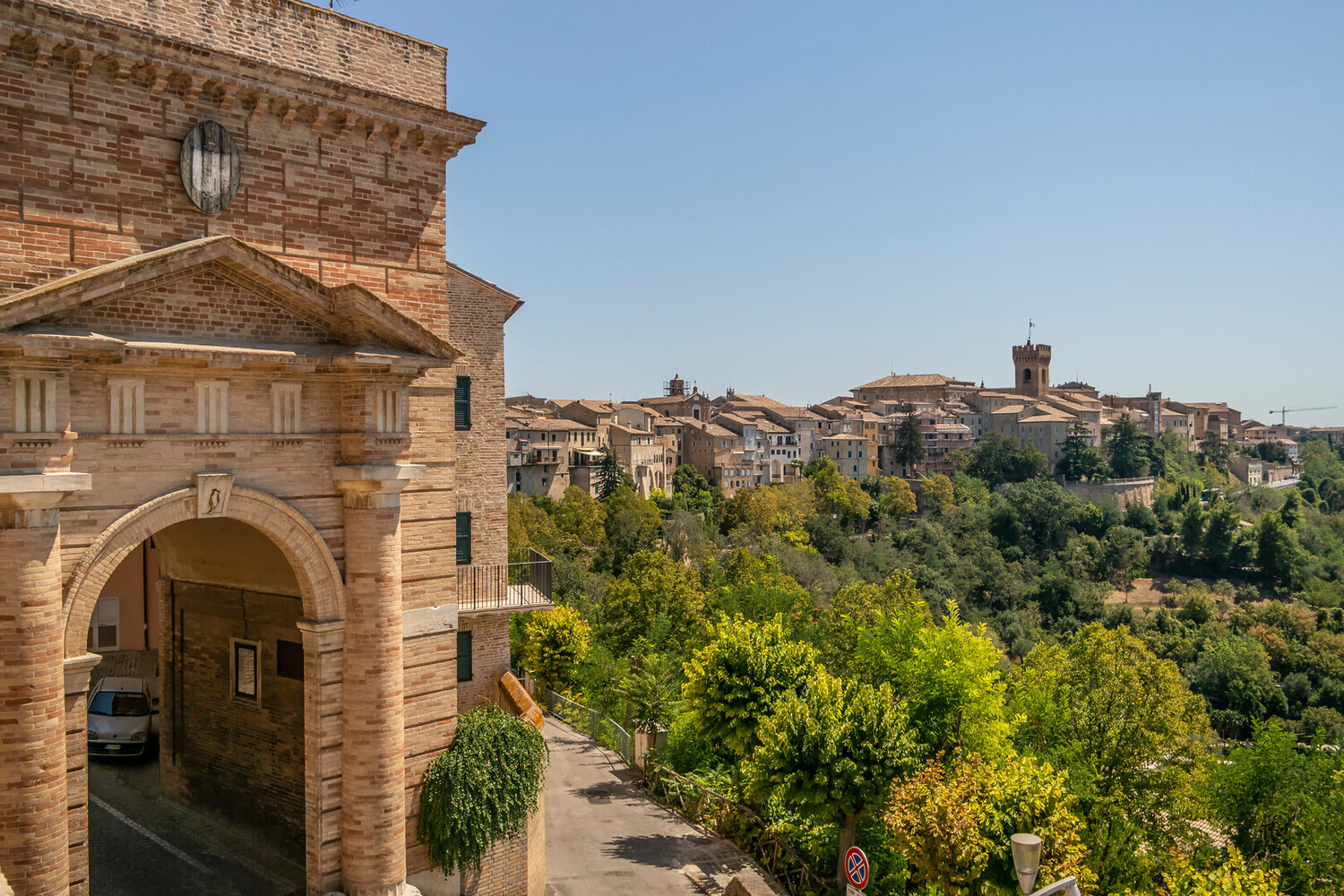
40 minutes from Loreto, Recanati makes a perfect side trip for those already exploring the spiritual richness of the region. This hilltop town is best known as the birthplace of poet Giacomo Leopardi, whose verses still echo through its quiet streets and rolling landscapes. Visit the Leopardi House Museum, step inside the Church of San Vito, and soak up sweeping views that connect beautifully with Loreto’s sacred skyline. With its medieval piazzas, bell towers, and poetic soul, Recanati adds a thoughtful, romantic layer to any journey through central Marche.
Wander Ancona’s waterfront and art scene
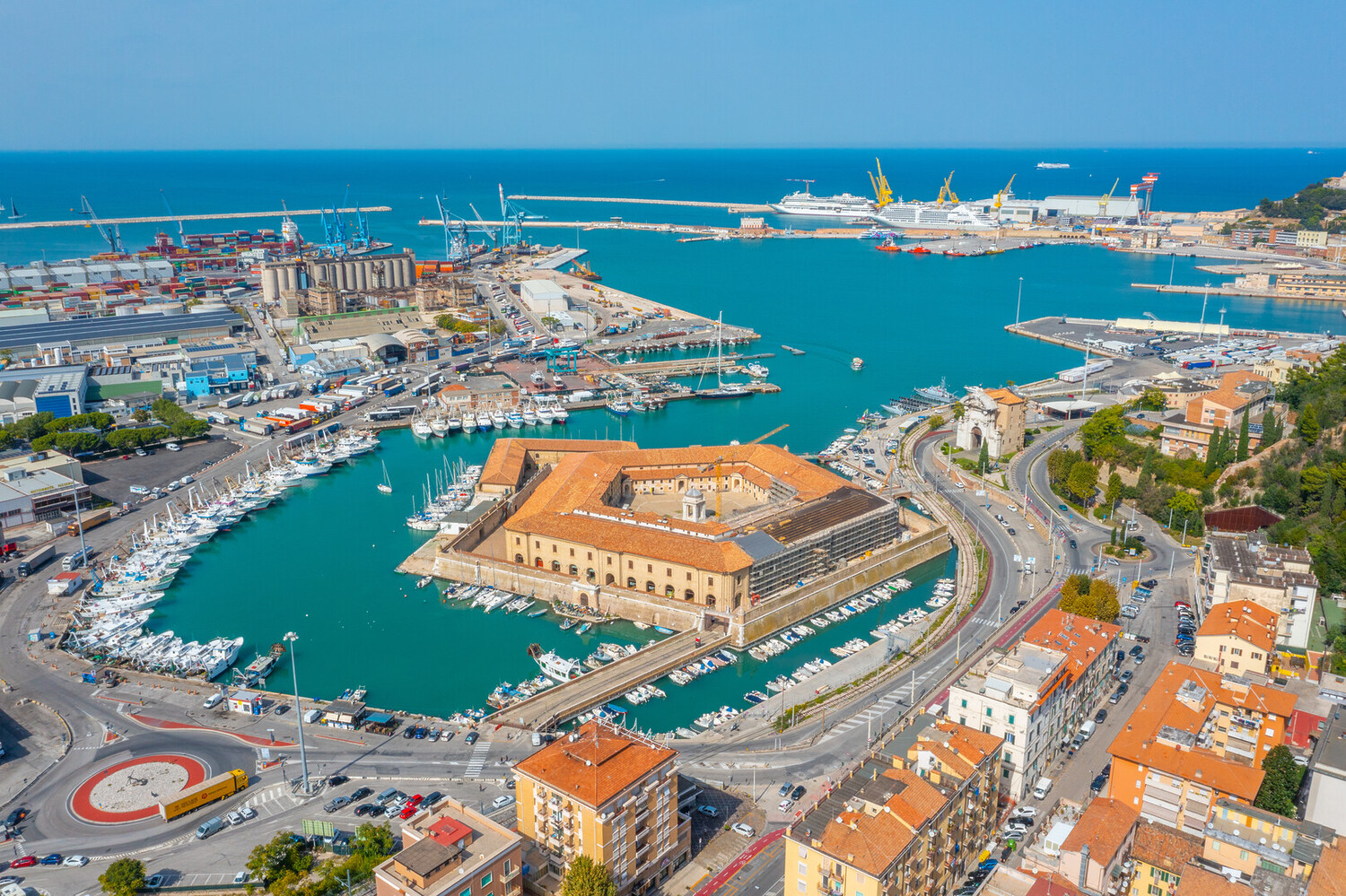
Just 30 minutes from Loreto, Ancona brings you from sacred marble to salty sea breeze in no time. Wander past Roman arches, climb up to the Cathedral of San Ciriaco for insane Adriatic views, or check out ancient relics at the National Archaeological Museum. Between old fountains, buzzing piazzas, and hilltop sunsets, Ancona blends history with coastal charm like nowhere else.
Ready to switch gears from pilgrimage to port life? Dive into our full guide and visit Ancona Italy like a local.
Toast Conero with views

Perched on the sunlit slopes of Monte Conero, Moroder Alessandro is a family-run winery where time stretches like a good wine, steady and effortlessly rich. The estate’s rosso Conero is molded by salty sea breezes, and its cellar (built back in 1837) still pours with old-world character. A tasting here means good wine, sweeping vineyard views, and a relaxed rhythm that feels perfectly Conero.
Hike the trails and cliffs of Monte Conero
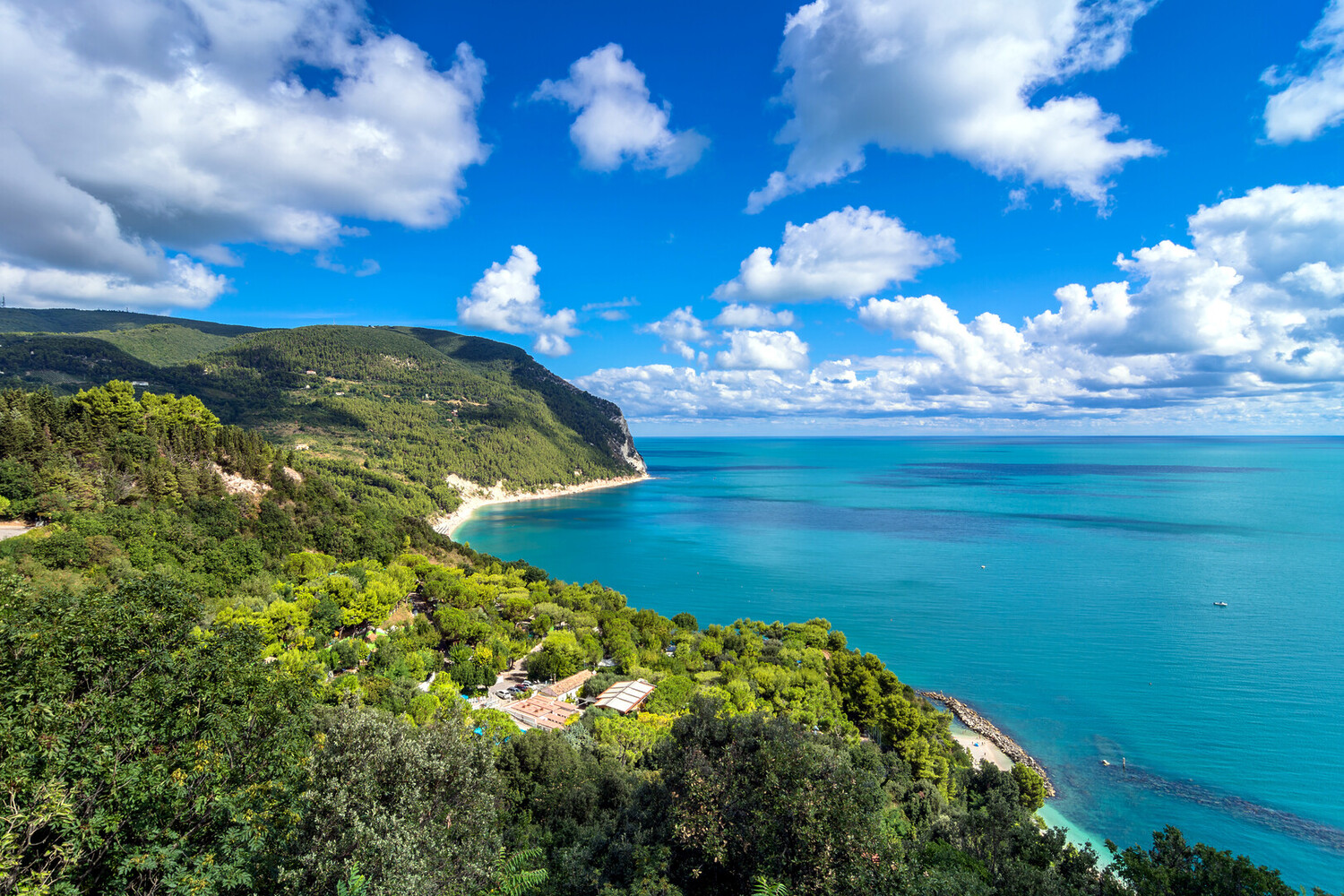
About 40 minutes from the sanctuary of Loreto, Monte Conero rises above the Adriatic with cliffs, forests, and secret beaches that feel like nature’s own cathedrals. Hike through Mediterranean scrub, pause at panoramic overlooks, and find quiet spots where the sea meets the sky. This natural reserve isn’t just for trekkers, it offers a reflective escape that pairs beautifully with the spiritual journey you start when you visit Loreto. Wrap it all up with a slow walk in Sirolo or a seafood lunch in Numana, two coastal gems tucked beneath the mountain’s edge.
Walk through Opera, wine in Macerata
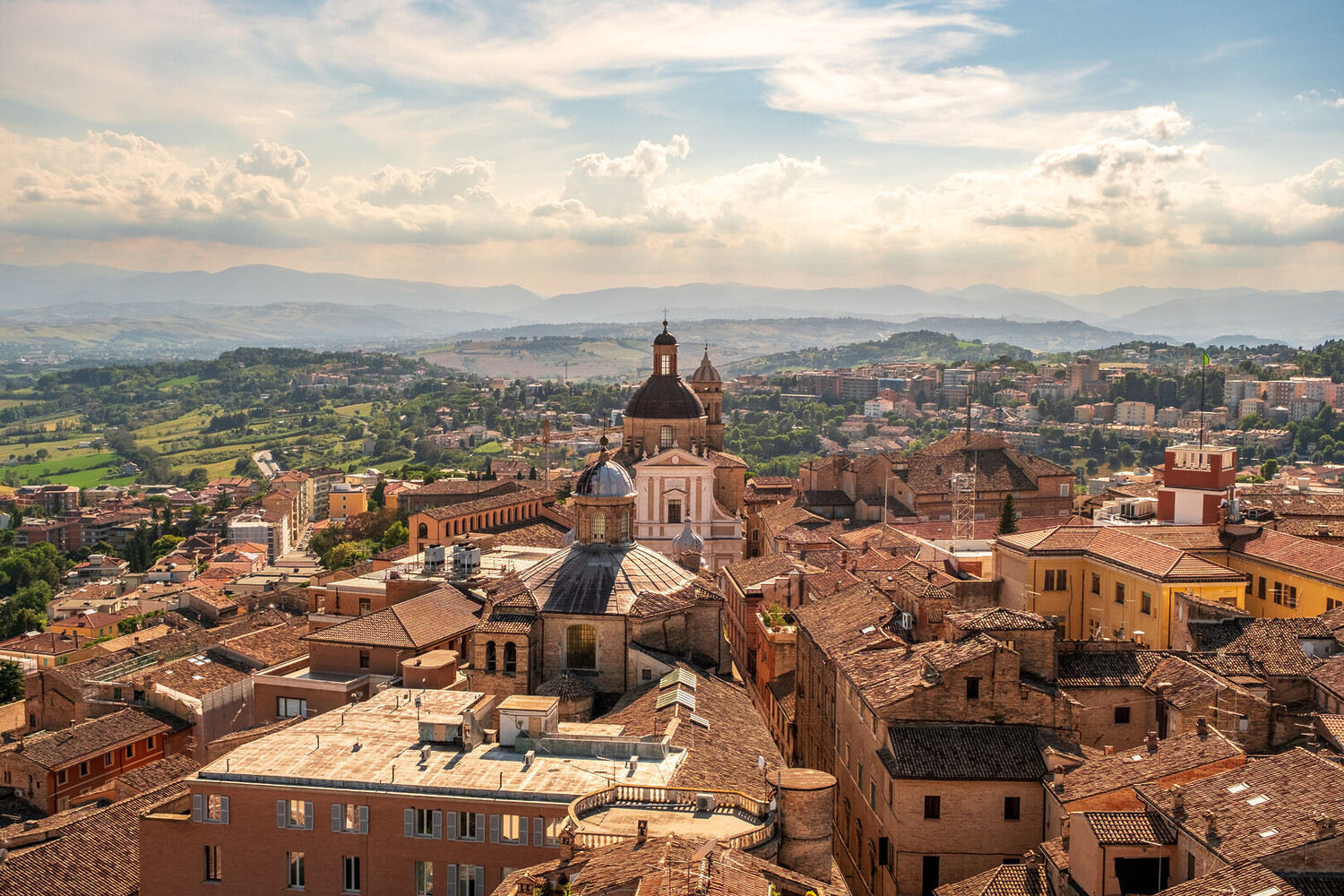
Tucked among the soft hills of central Italy, Macerata rewards curious travelers with rich culture and a relaxed local vibe. If you’re into open-air opera, cobbled streets, and wine-tasting in charming piazzas, visit Macerata Italy, and let the slower pace work its magic. Check out the Sferisterio, an incredible open-air arena with world-class acoustics, then hop from one local enoteca to another for a glass of Verdicchio or Rosso Piceno.
Explore stone-carved beauty in Ascoli Piceno
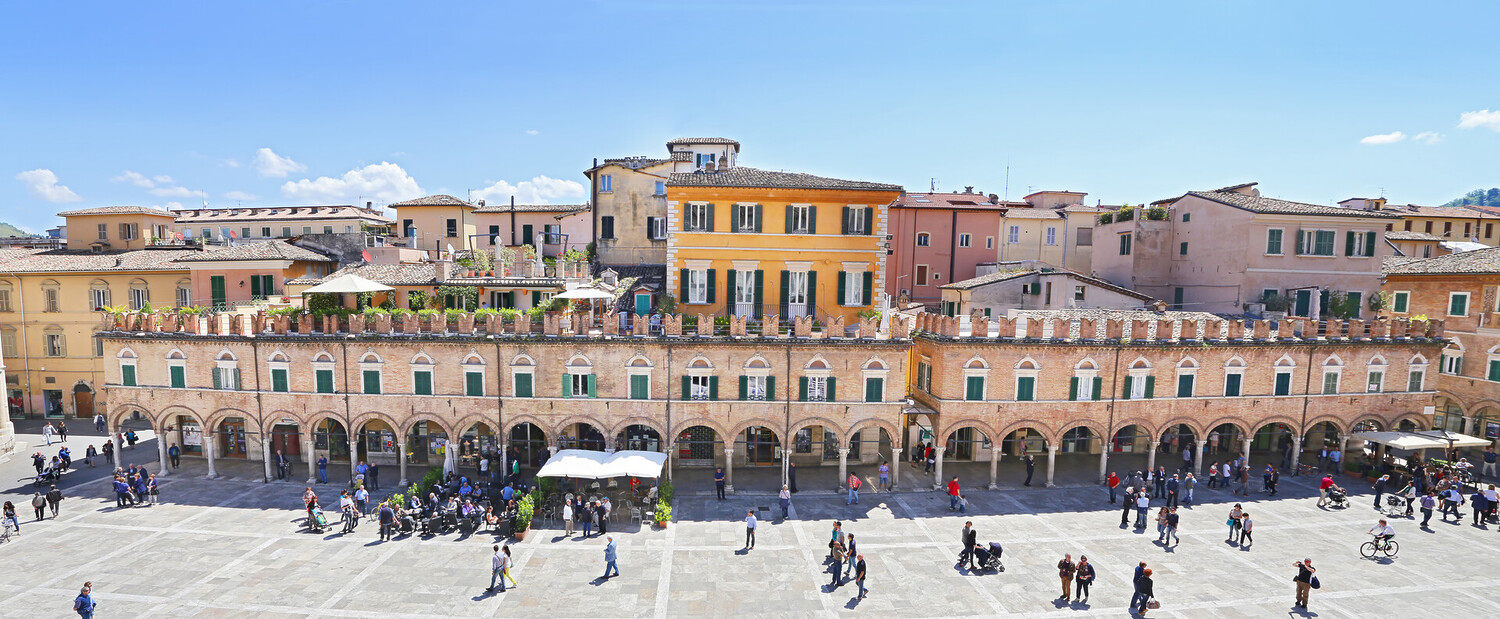
If piazzas could talk, Ascoli Piceno’s would have centuries of stories to tell. Known for its creamy travertine stone and Renaissance flair, this southern Marche town delivers big on charm and heritage. Visit Ascoli Piceno Italy and start at Piazza del Popolo, one of Italy’s most elegant squares, where locals sip coffee and teens gather after school. Then lose yourself in the winding lanes, ancient towers, and Roman bridges that crisscross the city. Between bites of olive ascolane and sips of local wines, you’ll understand why this place keeps showing up in travel forums as one of Italy’s best-kept secrets.
Good to know before visiting Loreto
Is Loreto worth visiting?
Absolutely. Loreto is one of the most important pilgrimage sites in Italy and offers a unique blend of religious heritage, Renaissance architecture, and sweeping views of the Adriatic coast. Whether you are a history lover, a devout pilgrim, or a curious traveler, Loreto provides an enriching cultural experience.
What is Loreto famous for?
Loreto is most famous for the Basilica della Santa Casa, a grand sanctuary that houses the Holy House of the Virgin Mary. According to tradition, this is the very house where Mary lived and received the Annunciation, miraculously transported from Nazareth to Italy in the 13th century. The basilica draws thousands of religious pilgrims each year. Loreto is also known for its hilltop location and stunning views over the Adriatic Sea.
Where is Mary’s house now located?
The House of the Virgin Mary, also known as the Holy House, is now located in the Basilica of Loreto in Loreto, Italy. According to legend, it was transported from Nazareth by angels in the late 13th century to what was considered a safer location. The interior walls are made of stone believed to match those from Nazareth and are still venerated by pilgrims today.
What is the miracle of Loreto?
The miracle of Loreto refers to the mysterious transportation of the Holy House of the Virgin Mary from Nazareth to Loreto in the 13th century. The Legend of the Translation tells that angels carried the house through the air to save it from invading forces. Some historical scholars suggest that the house may have been dismantled and shipped by crusaders. Whatever the origin, the house has remained a major center of Catholic veneration for centuries.
How do I travel to Loreto, Italy?
Loreto is accessible by train, renting a car, or bus. The closest major city is Ancona, which has an international airport (AOI). From Ancona, it’s about a 30-minute train ride or drive. There are regular trains from major cities like Rome, Bologna, and Milan to Loreto, with a short taxi or bus ride required from the train station to the basilica. If you’re driving, it’s located just off the A14 Autostrada along Italy’s eastern coast.
How far is Loreto from Rome?
The distance from Rome to Loreto is approximately 280 kilometers (174 miles). By car, the journey takes around 3.5 hours via the A1 and A14 motorways. Alternatively, you can take a direct train from Rome Termini to Loreto, which may take around 4 hours depending on connections. Regional and Intercity services are available for this route.
What are the best hotels to stay in Loreto?
Loreto offers a variety of lodging options for pilgrims and tourists alike. Some top-rated accommodations include:
- San Francesco Hotel: Just steps from the basilica, offering panoramic views and modern amenities in a historic setting.
- Hotel Giardinetto: A cozy, family-run hotel with friendly service and great location near the town center.
- San Gabriele Hotel: Known for its peaceful atmosphere and proximity to both the basilica and local eateries.
What are the best restaurants in Loreto?
Loreto offers an authentic taste of the Marche region. Don’t miss these local favorites:
- Trattoria Norma: A homely spot offering traditional Marche cuisine at great value.Il Baccaro: Cozy wine bar with small plates, local wines, and friendly staff.Locanda del Picchio: Located just outside the town, known for organic farm-to-table meals and stunning countryside views.


